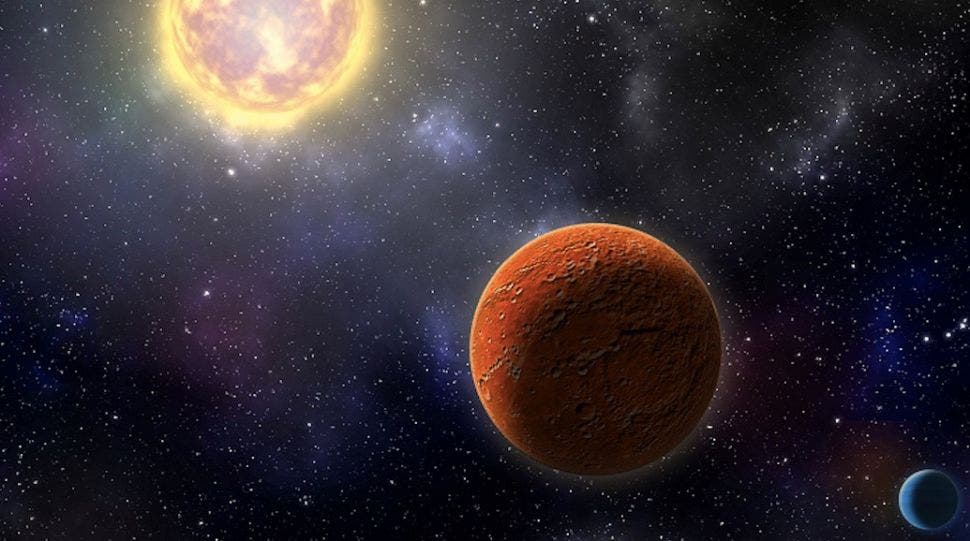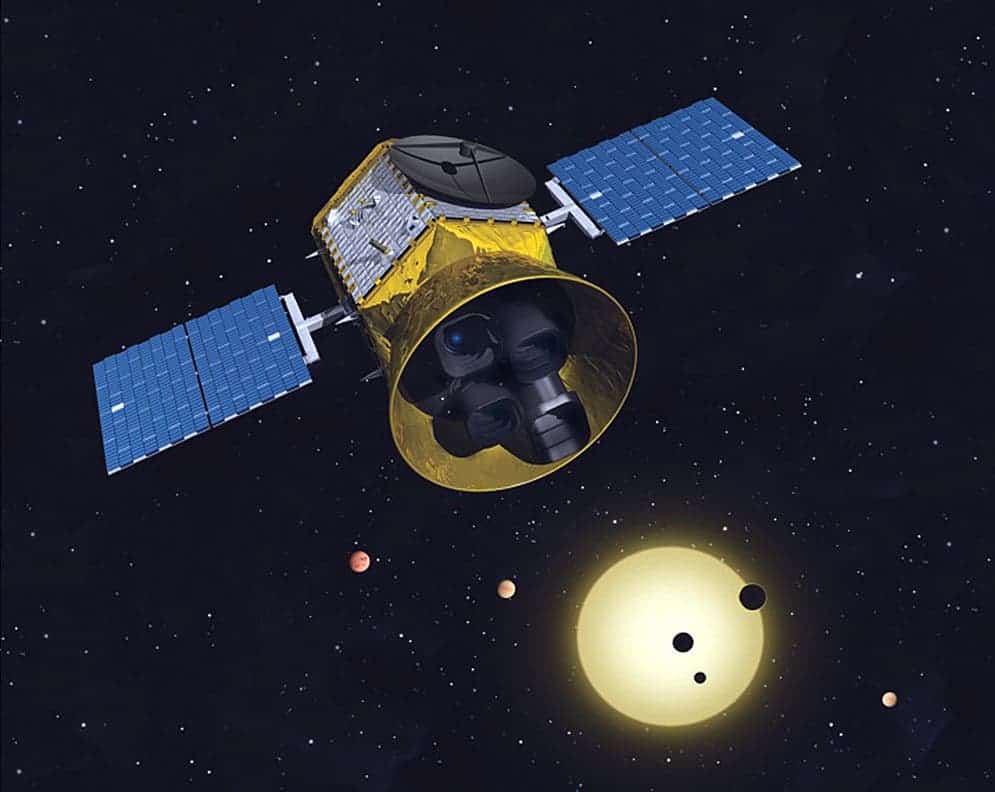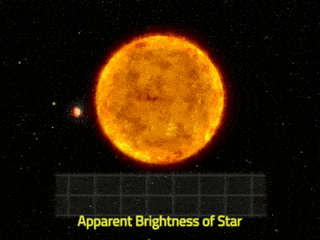
In April of last year, NASA launched its Transiting Exoplanet Survey Satellite (TESS) to find thousands of new planet candidates and exoplanets. Researchers had hoped that at least 300 of them would be the size of our home planet. Well, they found one.
The planet, lovingly labeled HD 21749c, is the smallest world outside our solar system that TESS has identified to date. The planet orbits star HD 21749, a respectably short 52 light-years from Earth considering the vastness of the universe. The star was also found to host a warm sub-Neptune planet, HD 21749b.
“For stars that are very close by and very bright, we expected to find up to a couple dozen Earth-sized planets,” says lead author and TESS member Diana Dragomir, a postdoc in MIT’s Kavli Institute for Astrophysics and Space Research. “And here we are — this would be our first one, and it’s a milestone for TESS. It sets the path for finding smaller planets around even smaller stars, and those planets may potentially be habitable.”
Published in the Astrophysical Journal Letters, the newly discovered Earth-sized planet is likely a rocky, but uninhabitable world with temperatures up to 800 degrees Fahrenheit (426.67 Celsius). It orbits its parent star in just 7.8 days. The sub-Neptune find has the longest orbit time of any of the TESS discoveries published thus far, at 36 days. Due to the technique that TESS uses, most of its finds will have orbits of fewer than 10 days.

TESS, like the now-deceased Kepler Space Telescope, uses a transit method to search other worlds. It looks for tiny brightness dips which occur when planets cross in front of their host stars. The goal for scientists is to use TESS to find the planets and then use land-based telescopes, and soon the upcoming (and much delayed) James Webb Space Telescope, to study them in detail.

While TESS has the ability to find the world’s size, the exoplanet’s mass must be gleaned from other instruments, like the Planet Finder Spectrograph instrument on the Magellan II telescope at Carnegie’s Las Campanas Observatory in Chile.
“It’s so exciting that TESS, which launched just about a year ago, is already a game-changer in the planet-hunting business,” said Johanna Teske, an astronomer at the Carnegie Institution for Science, and co-author on the paper. “The spacecraft surveys the sky and we collaborate with the TESS follow-up community to flag potentially interesting targets for additional observations using ground-based telescopes and instruments.”
Planned for a two-year stint, TESS aims to identify at least 50 small, rocky planets, along with estimates of their masses. So far, the satellite has found 10 planets smaller than Neptune, four of which have been estimated to be twice the size of our own Pale Blue Dot.






